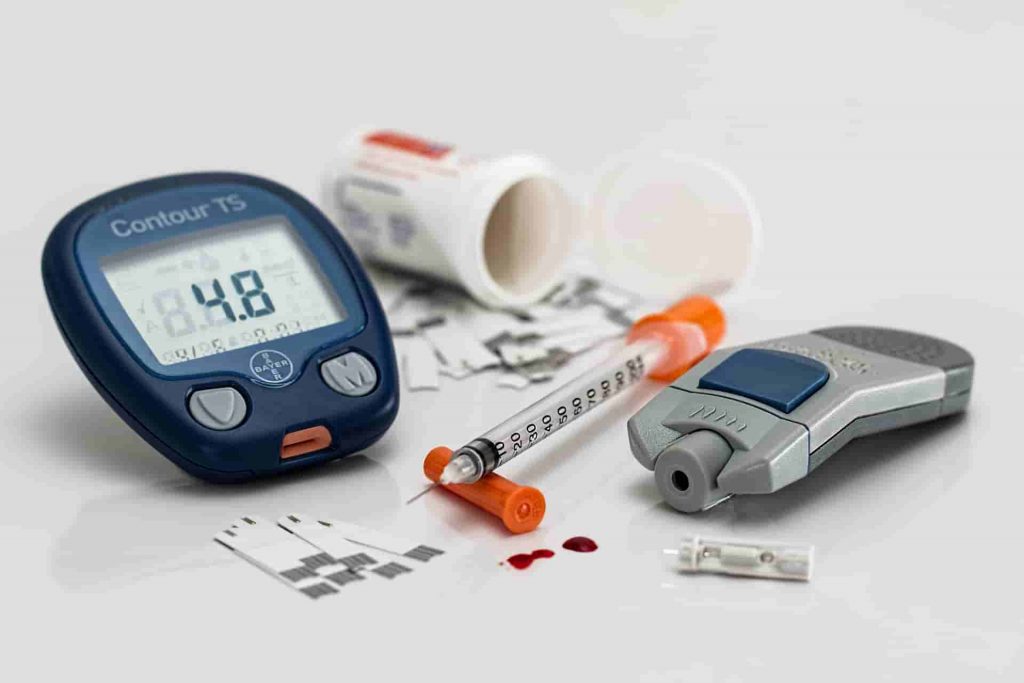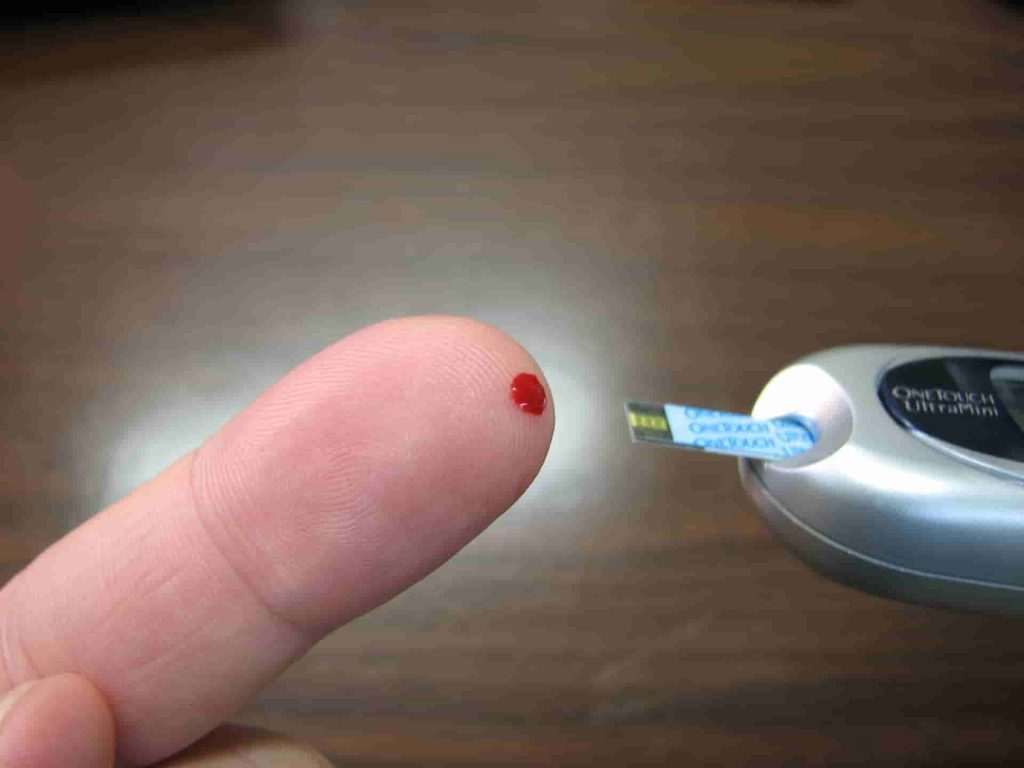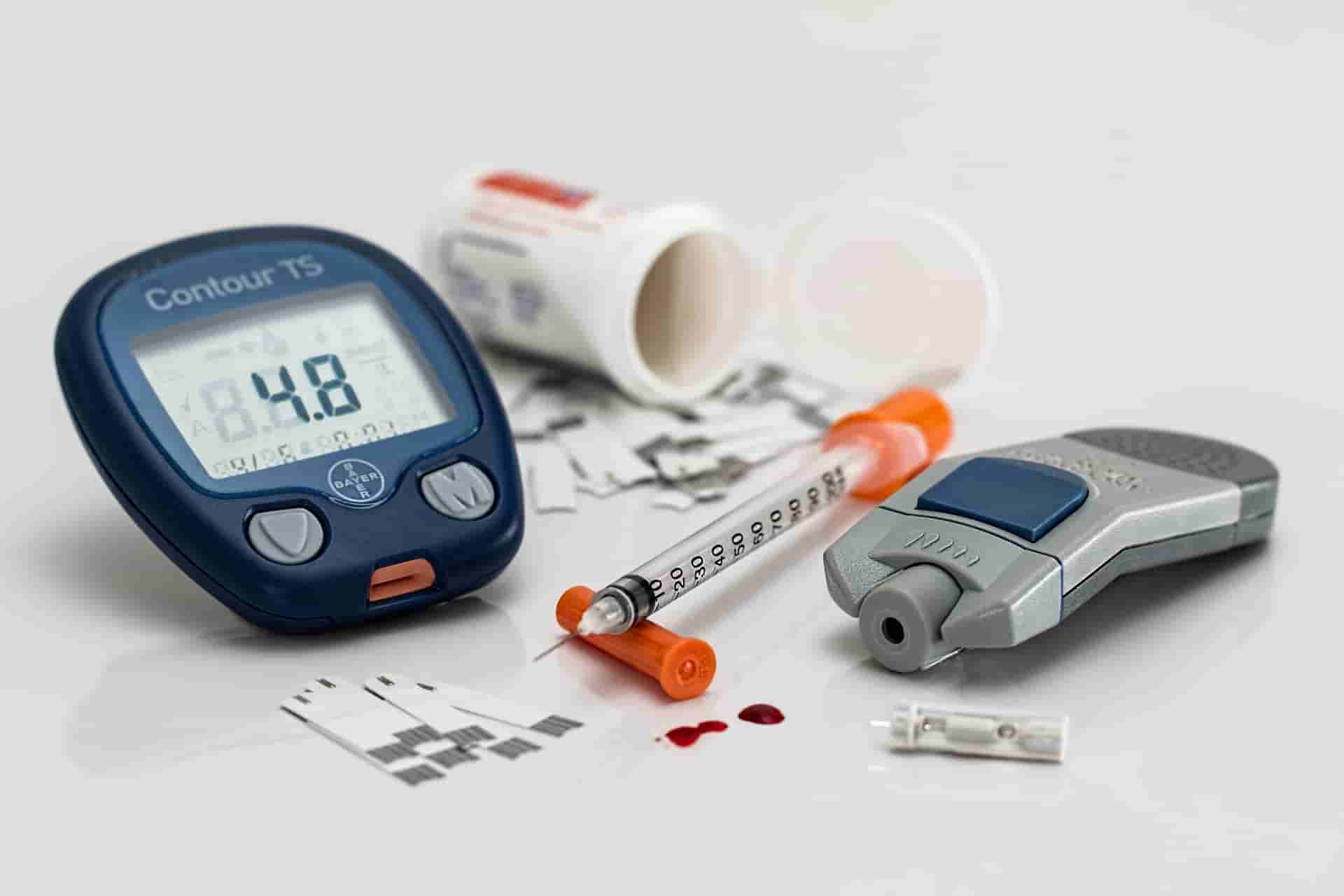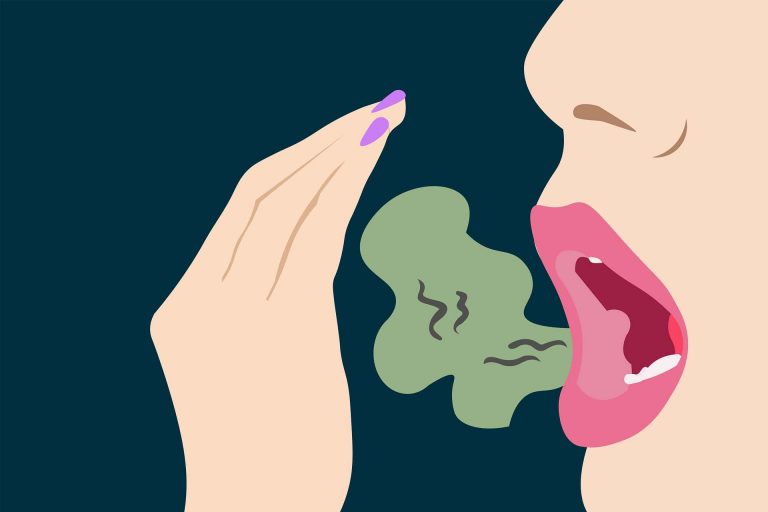Blood Sugar Levels: Everything You Should Know
Hardly any blood value is as well-known as blood sugar and yet it is not easy to understand. However, especially with diabetes, you should know what the blood sugar levels mean. Here you can find out everything you need to know.
- Blood sugar levels – what is it anyway?
- Understand blood sugar levels
- Measure blood sugar levels
- Measure blood sugar levels step by step
- Blood sugar levels without peaks
- Blood sugar memory – the HbA1c value
- Why should you keep an eye on your blood sugar?
- Lower blood sugar levels
- FAQs – the most common questions
- Knowledge to take away
Blood sugar levels – what is it anyway?
This is a laboratory value that indicates how much glucose is in the blood. Glucose, also called grape sugar, is the sugar that our body uses to supply the cells with energy. Ingested carbohydrates are broken down into smaller molecules [1] in the intestine and then get into the blood. The pancreas secretes the hormone insulin so that the sugar can be absorbed by the cells.
Blood sugar fluctuates normally over the course of a day. There is very little glucose in the blood in the morning, and the value rises after a meal. In healthy people, the pancreas then produces the hormone insulin as needed and the blood sugar drops to its normal value. By the way, the lesser-known hormone glucagon is the antagonist of insulin. It ensures that stored glucose gets into the blood when the blood sugar level is low.

Understand blood sugar levels
The blood sugar value can be given in two units:
- Millimoles per liter (mmol / l)
- Milligrams per deciliter (mg / dl)
Since there is no international agreement in which of the units the value should be given, both circulate in parallel and often cause confusion. If the blood sugar is given in mmol / l, then the dissolved sugar parts per volume are meant. The mg / dl refers to the weight of the dissolved sugar per volume.
If the blood sugar value is determined in the morning before the first meal, it is referred to as the fasting blood sugar. If the sugar level is measured completely independently of the meals, this is called the occasional sugar level. If a doctor performs an oral glucose tolerance test (oGTT), the glucose concentration in the blood is measured two hours after an intake of 75 grams of sugar.
In the table you can see the blood sugar values for healthy people as well as for people with untreated diabetes. They relate to adults.
| Fasting blood sugar | Occasional sugar | oGGT | |
| Healthy | below 100 mg / dl (5.6 mmol / l) | below 130 mg / dl (7.2 mmol / l) | below 140 mg / dl (7.8 mmol / l) |
| diabetes | over 126 mg / dl (7.0 mmol / l) | over 180 mg / dl (10 mmol / l) | over 200 mg / dl (11.1 mmol / l) |
If the sugar levels are between those of healthy and sick people, one speaks of prediabetes. A warning sign, so to speak, that diabetes could soon be present.

Measure blood sugar levels
The doctor can have the blood sugar determined in a blood sample in the laboratory, but measuring is not just a business for professionals. Small blood glucose meters help, especially diabetics in everyday life, to control blood sugar. How often such a measurement should take place, however, is individual. It is best to discuss this with your doctor.
As a vague guideline, the following advice applies: If the treatment is based on a diet without drugs, a measurement once a week is sufficient. If the patient is already taking medication but not yet taking insulin, he should measure the blood sugar level every other day. In addition, a daily profile with three to four measurements is advisable once a week. If a patient is being treated with medication and insulin, a daily measurement is necessary.
Measure blood sugar levels step by step
Here are instructions for classic measuring devices with lancets and test strips:
- Wash your hands thoroughly, it is best to use warm water for this, as this stimulates blood circulation. Then dry your hands well.
- Insert a new lancet before each measurement. The exact process varies depending on which lancing device you use.
- Insert the test strip into the meter. Only use test strips that are in perfect condition and can be taken directly from the container.
- Place the lancing device on the side of a fingertip. Pull the trigger. If there is no drop of blood, you can press the fingertip lightly but not squeeze it.
- Carefully hold the prepared test strip to the blood drop for the measurement.
- Wait for the result and note the blood sugar value together with the date and time.
Blood sugar levels without peaks
Continuous tissue sugar measurement (CGM) is particularly suitable for patients who have to measure their blood sugar level very frequently. A sensor is stuck to the upper arm or abdomen, it is connected to a measuring thread in the subcutaneous fatty tissue and measures the tissue sugar there about every five minutes.
There are other measurement methods, such as non-invasive sensors or diabetes warning dogs, which are designed to detect an increase or decrease in blood sugar levels. However, these methods are not adequately tested, but can serve as additional safeguards.
Blood sugar memory – the HbA1c value
The blood sugar value only gives a snapshot. In order to be able to make a statement about blood sugar for a longer period of time, doctors have the HbA1c value determined in the laboratory. This is a sub-form of hemoglobin (red blood pigment) to which sugar particles are attached.
If the blood sugar level is increased over a longer period of time, the bond between sugar and hemoglobin becomes insoluble and remains in place for the entire life of the blood cell, which lasts about three months. Thus, the HbA1c value provides information about the patient’s blood sugar level in the last few weeks and is therefore also referred to as blood sugar memory.
In healthy people, the value is between 4.5 and 5.7 percent, and in sick people over 6.5 percent.
Why should you keep an eye on your blood sugar?
If the blood sugar level is increased, this is not without consequences. Type 1 diabetes can lead to ketoacidosis, in which the blood becomes acidic and patients can fall into a life-threatening diabetic coma.
This is rarely the case with type 2 diabetes, but a permanently high blood sugar level leads to secondary diseases such as diabetic retinopathy, stroke, heart attack or damaged kidneys. Regular checks are therefore useful.
Lower blood sugar levels
In healthy people, the hormones in the pancreas regulate blood sugar. In diabetics, however, this regulation is disturbed. Nutritional therapy with lifestyle changes is often enough on its own to regain control of blood sugar levels.
The LOGI method can help diabetics to bring the values into the normal range. It is a form of low-carb diet.
FAQs – the most common questions
What is a normal sugar level?
Which blood sugar levels are dangerous?
Which foods lower blood sugar?
Knowledge to take away
The blood sugar level provides information about the glucose particles in the blood. If the value is measured on an empty stomach, it should be below 100 mg / dl (5.6 mmol / l).
Regular check-ups are important because an increased blood sugar level can lead to secondary diseases.
An adapted diet can normalize high blood sugar levels.






